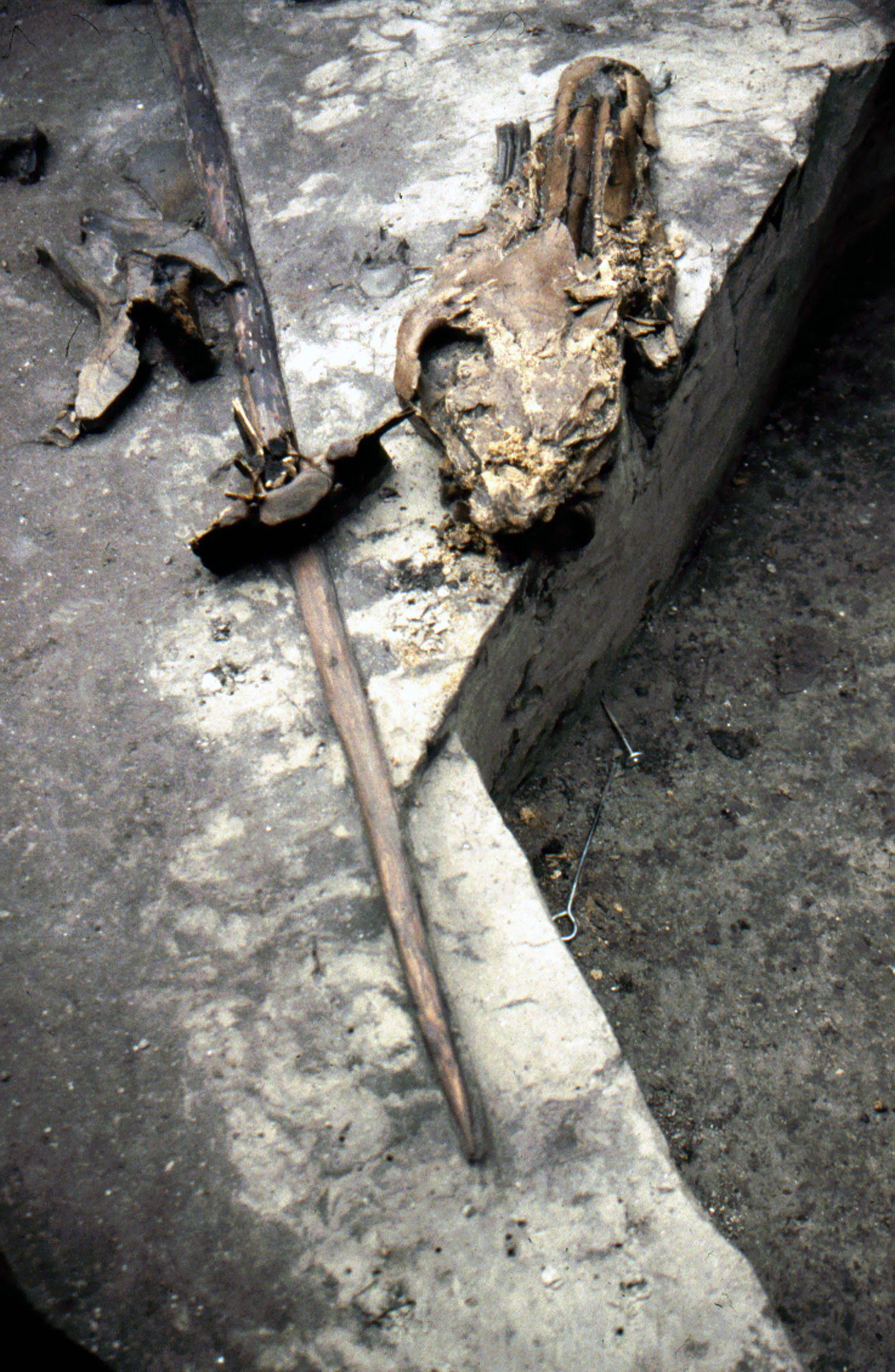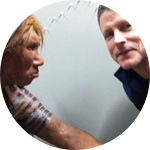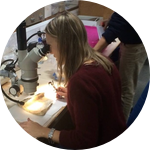About This Project
This interdisciplinary project looks at how the earliest weapons were used. Plain wooden spears have been found in Europe, with the earliest example dating to around 400,000 years. Though found alongside butchered animals it's unclear if they were designed as thrusted or thrown hunting spears or for self-defence against big cats. I will test replicas in a ballistics lab to evaluate effectiveness as hand-thrown hunting spears, helping understand key questions about behaviors in human evolution.
Ask the Scientists
Join The DiscussionWhat is the context of this research?
During the warm periods in the Middle Pleistocene Homo heidelbergensis, the predecessors of Neanderthals, inhabited Europe and sites from this time provide the earliest evidence of weapons. The site of Boxgrove in the UK dates to 500,000 years ago, and a butchered horse there bears a possible hunting lesion from a spear. Clacton-on-Sea dating to about 450,000 years ago and Schöningen, Germany from around 300,000 years ago, have remarkably preserved plain wooden spears. The discoveries revolutionised understandings of human evolution. But there are disagreements about how these spears were used, whether as thrusting or throwing spears or possibly for self-defence against large cats such as Homotherium latidens!
What is the significance of this project?
These spears are the earliest weapons known, but how they were used, and how effective they would have been remains a mystery. We can only evaluate them through experimental work. By measuring their effectiveness, and any damage to bones and spears, we can evaluate both archaeological spears and potential hunting lesions. We can also then compare their effectiveness as hand-thrown weapons compared with a previous experiment measuring their effectiveness as thrusting spears.
By understanding the effectiveness of these early weapons, and understanding the archaeological record, the work will significantly contribute to debates about early hunting and scavenging behaviors of our human ancestors, allowing us to compare them with those of our own species.
What are the goals of the project?
This experiment aims to evaluate the effectiveness of plain wooden spears on a large mammal when used as hand-thrown javelins. The experiment will take place at ballistic testing facilities at Cranfield Defence and Security, at the Defence Academy of the UK. Spear replicas crafted from naturally grown spruce trees will be fired using an air cannon at hand-thrown spear velocities into an ethically sourced large mammal torso*, and recorded with high speed video. Depth of penetration, lesions, and damage to spears will be studied using macro- and microscopic methods. I will compare these results with a previous experiment testing spears as thrusting weapons allowing me to evaluate the use of the earliest weapons and understand early hominin hunting. We test this summer!
Budget
Researchers at Cranfield's ballistics testing lab generously give their time towards my experimental work. I need to pay for high quality spear replicas. The equipment we're using includes high speed video and an air cannon to test in a controlled way at the right impact velocities, and record our results accurately for comparison with previous experiments. Doing the work without such equipment would lead to unverifiable and unrepeatable results. An ancient technology specialist, Owen, crafts the highly accurate spear replicas from spruce trees, donated by the New Forest. I have some funding secured from the Arts and Humanities Research Council and The Worshipful Company of Armourers and Brasiers towards this experiment, which covers costs of the target, small consumable materials, travel, and bone cleaning. I successfully funded previous PhD experiments through UCL (CHIRP and the IoA) and the European Human Behaviour and Evolution Association.
Endorsed by
Meet the Team
Affiliates
Annemieke Milks
Could anything be more exciting than puzzling together how our human ancestors lived? Why did Homo sapiens ultimately thrive while other species of humans disappeared? What kind of a role did the use of wood, which we see so rarely archaeologically, play in early technologies? What can this understanding of human evolution and the development of technology help us in understanding our own current dependence on technology?
I spend my time as a PhD research student in Palaeolithic Archaeology at UCL's Institute of Archaeology researching these questions, and have been an avid experimenter for over 5 years. My research interest in early weaponry ultimately relates to questions about human cognition and palaeodiets, social group structures and use of raw materials and the landscape. In addition to experimental research I am also researching the archaeological artefacts (both spears and lesions to bone), and studies of ethnographic examples of plain wooden spears.
I help run the Archaeology of Human Evolution network and the Evolutionary Weapons Research Group. I have a chapter in the recently published 'Multidisciplinary Approaches to Stone Age Weaponry'.
In my 'free' time I'm a parent to a little person! I used to be a professional violinist so music is still a big part of my life, and I love running, gardening and traveling.
You can follow me on twitter: @AnnemiekeMilks
Additional Information
Cover Image copyright and courtesy of John Sibbick.
Read more about my PhD research here!
One of the Schöningen spears in context, alongside the remains of a butchered Pleistocene horse (courtesy of Prof. Nicholas Conard and Dr. Jordi Serangeli)

* Protocol for the use of animal meat for testing (meat designated for human consumption, ethically sourced from a butcher) will follow that of the testing facilities, and ethical approval will be in place in advance of testing.
Selected Bibliography
Churchill, S. E., & Rhodes, J. A. (2009). The Evolution of the Human Capacity for “Killing at a Distance”: The Human Fossil Evidence for the Evolution of Projectile Weaponry. In J.-J. Hublin & M. P. Richards (Eds.), The Evolution of Hominin Diets (pp. 201–210). Springer.
Conard, N. J., Serangeli, J., Böhner, U., Starkovich, B. M., Miller, C. E., Urban, B., & van Kolfschoten, T. (2015). Excavations at Schöningen and paradigm shifts in human evolution. Journal of Human Evolution, (89) 1–17. http://doi.org/10.1016/j.jhevo...
Oakley, K., Andrews, P., Keeley, L., & Clark, J. D. (1977). A Reappraisal of the Clacton Spearpoint. Proceedings of the Prehistoric Society, 43, 13–30.
Parfitt, S. A., & Roberts, M. B. (1999). 6.5 Human modification of faunal remains. In M. B. Roberts & S. A. Parfitt (Eds.), Boxgrove: A Middle Pleistocene hominid site at Eartham Quarry, Boxgrove, West Sussex (Vol. 17, pp. 395–415). English Heritage.
Schoch, W. H., Bigga, G., Böhner, U., Richter, P., & Terberger, T. (2015). New insights on the wooden weapons from the Paleolithic site of Schöningen. Journal of Human Evolution, (89) 214-225. http://doi.org/10.1016/j.jhevo...
Serangeli, J., van Kolfschoten, T., Starkovich, B. M., & Verheijen, I. (2015). The European saber-toothed cat (Homotherium latidens) found in the ``Spear Horizon“” at Schöningen (Germany). Journal of Human Evolution, (89) 172-180. http://doi.org/10.1016/j.jhevo...
Shea, J., & Sisk, M. (2010). Complex projectile technology and Homo sapiens dispersal into western Eurasia. PaleoAnthropology, 2010, 100–122.
Thieme, H. (1997). Lower Palaeolithic hunting spears from Germany. Nature, 385, 807–810.
van Kolfschoten, T., Buhrs, E., & Verheijen, I. (2015). The larger mammal fauna from the Lower Paleolithic Schöningen Spear site and its contribution to hominin subsistence. Journal of Human Evolution, 89 (C), 138–153. http://doi.org/10.1016/j.jhevo...
Project Backers
- 17Backers
- 178%Funded
- $1,513Total Donations
- $89.00Average Donation













